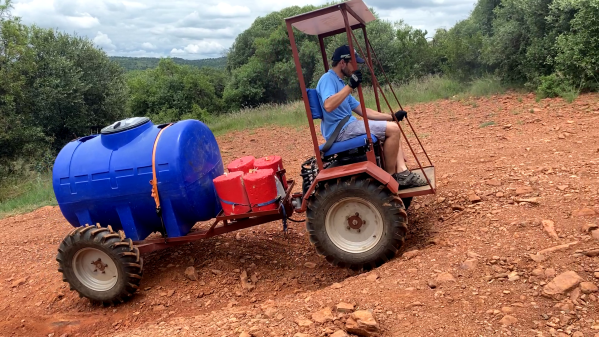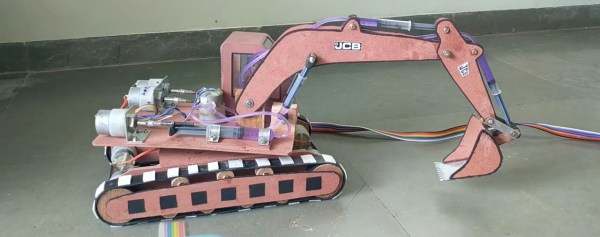Agriculture on any scale involves many tasks that require lifting, hauling, pushing, and pulling. On many modern farms, these tasks are often done using an array of specialized (and expensive) equipment. This puts many small-scale farmers, especially those in developing countries, under significant financial pressure. These challenges led a South African engineering firm to develop the Kotonki, a low-cost hydraulically powered utility vehicle that can be customized for a wide variety of use cases. Video after the break.
The name Kotonki is derived from the Setswana phrase for a donkey kart. It is in essence a self-propelled hydraulic power pack, capable of hauling 1 ton of anything that can fit on its load bed. It comes in front-wheel drive or four-wheel drive versions, with each wheel individually driven by a hydraulic motor. The simple welded steel frame articulates around a double pivot, which allows it to keep all 4 wheels on the ground over any terrain. At a max speed of 10 km/h it won’t win any races, but neither would most other agricultural vehicles. The Kotonki is built mostly using off-the-shelf components and is powered by a common 12HP Honda engine. In the world of DRM agricultural equipment, this makes for simple repairs, low running costs, and easy customization for the task at hand. This can include mounting log splitters, water pumps, lifting beds, or anything else that can be driven by its hydraulic and rotary PTOs (Power Take-Off).
Continue reading “Kotonki: Agricultural Vehicle Built For Customization”














